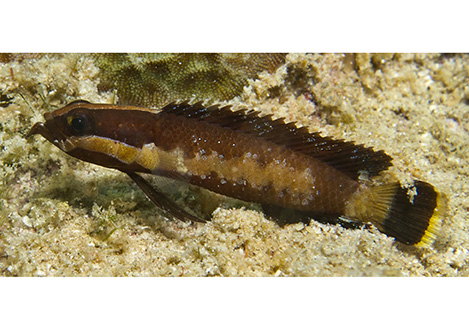Abstract
Acanthoplesiops cappuccino is described from the 16.4 mm SL holotype collected from Jeddah, Saudi Arabia, Red Sea. The following combination of characters distinguishes it from congeners: dorsal-fin rays XVIII,4; anal-fin rays VII,4; pectoral-fin rays 18; caudal fin not connected to last rays of dorsal and anal fins by membrane; and caudal peduncle with a pale yellowish brown bar, which extends broadly on to caudal fin. An underwater photo of the anaesthetised holotype is provided, as well as one of the freshly dead holotype and only known specimen of the similar species A. naka. Tables summarizing diagnostic characters of the six known species of Acanthoplesiops are included.
n�Uhd�_u�_k congeners by possessing both rostral and maxillary barbels; having the last simple dorsal-fin ray weak and smooth; the lateral line complete, with 40–42+1 pored scales; ½7–½8/1/3½ scales in transverse line from dorsal-fin origin to pelvic-fin origin; 4½ scales between lateral line and anal-fin origin. Hypselobarbus kolus is considered a synonym of H. curmuca, which is redescribed: it is distinguished from all congeners by possessing maxillary barbels only; the last simple dorsal-fin ray weak and smooth; 41–43+1 lateral-line scales; 9–10/1/4½–5 scales in transverse line between origins of dorsal and pelvic fins; and 5½–6 scales between lateral line and anal-fin origin.

